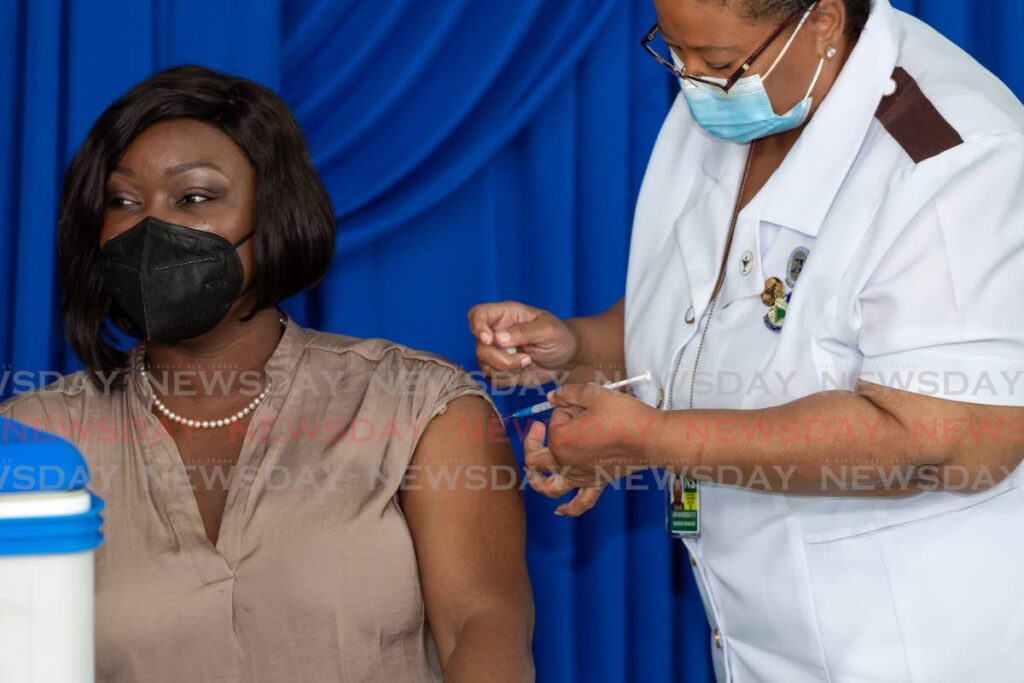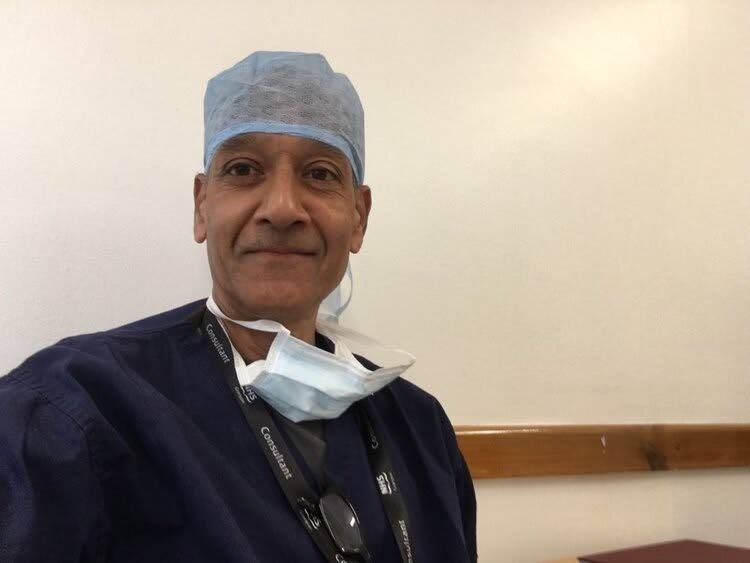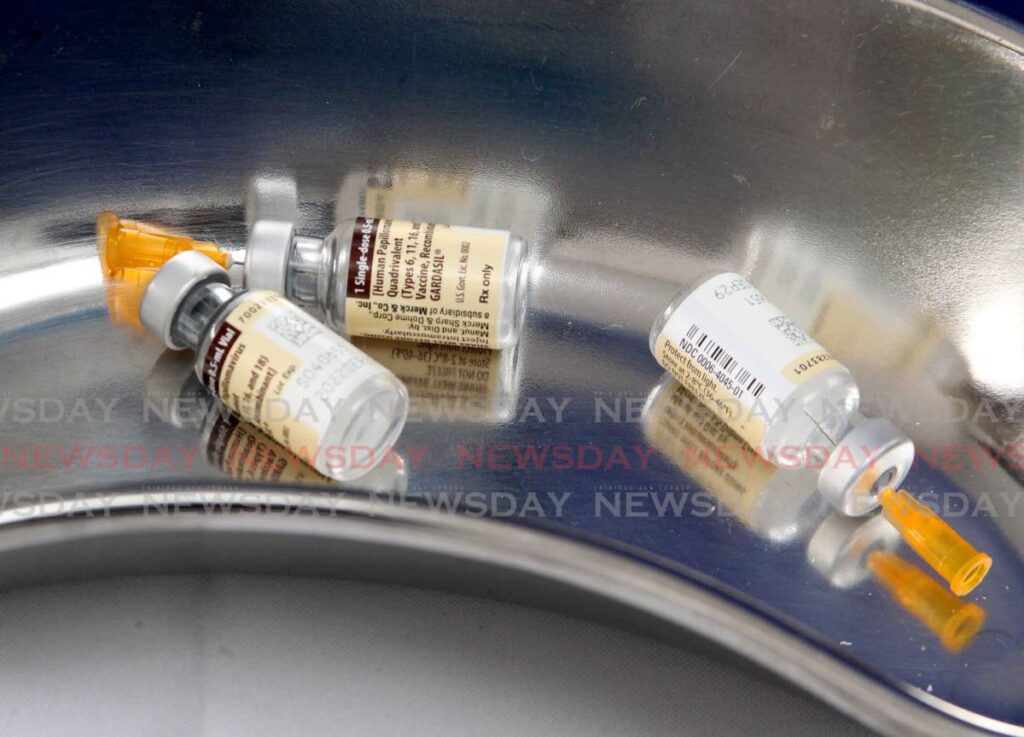Doctors appeal for women, girls to get Pap smears, HPV vaccines

Too many women are dying of cervical cancer; and they shouldn't be.
That's because a Pap smear and vaccination for the human papillomavirus (HPV) which causes the cancer can save lives. Yet not enough women are being screened, and neither are enough girls vaccinated.
It's the concern of public health gynaecological oncologists Dr Vishal Bahall and Dr Gordon Narayansingh.
Bahall said the biggest challenge is breaking the stigma that cervical cancer is a sexually-transmitted disease rather than one caused by skin-to-skin contact.
It is for this reason doctors like Bahall, who is the head of the obstetrics and gynaecology department at the San Fernando General Hospital (SFGH), are working with the Ministry of Health to develop guidelines to help women decide to get Pap smears and also help improve the lives of those already affected by cervical cancer.
He said HPV is present in about 90 per cent of the population – female and male – but only a small percentage of women go on to develop cervical cancer. Apart from cervical cancer, HPV causes certain cancers in males.
“The majority of people have the virus, but our bodies are designed to clear the virus naturally. It takes about one to two years to be cleared, but it can be cleared. But only a small percentage go on to develop cervical cancer.
“The real tragedy with cervical cancer is that we know what causes it, mainly HPV, and we have a vaccine to prevent it, we know how to screen for it and we know how look for it, which is through Pap smears.”
Yet, he said, “I see in my clinic, routinely, every week, about two or three people with it and the story is the same – they never had a Pap smear done, or they haven’t done one in about ten years.”
He explained that with the Health Ministry, “We are developing local guidelines for screening and we are trying to incorporate HPV testing in the public sector and treatment for both pre-cancerous legions as well as cancer.”

He said primary HPV screening was halted owing to the onset of the pandemic as priority had to be given to covid19 patients in need of the same machines they would have earmarked for HPV cases.
In 2013, the ministry initiated a programme to vaccinate girls – and boys – from ages nine-12 with HPV, where district health officers went to the schools and led an exercise with consent from parents.
However, Bahall noted there were some hiccups, as parents believed HPV was sexually transmitted and were reluctant to give permission to vaccinate their children.
“It is important to eradicate the taboo associated with cervical cancer. A lot of people in the past have associated that with sexual conduct.
“We tell patients and their parents that cervical cancer or HPV-related diseases are brought about by skin-to-skin contact, and this vaccine prevents cervical cancer.”
Advancing the need for awareness of Pap smears and HPV vaccination, he said the ministry's programmes would be rolled out in the near future.
He said a lot of work is being done in the background, with doctors meeting to chart the way forward.
“We have different proposals, different suggestions on how to get the word out for women to basically be reminded they should have their smears done. “
Among the suggestions, he said, is making HPV vaccination a requirement for entering secondary school.
“We have think a little differently about getting the word out, such as partnering with the mobile network companies to send out messages, just like they do with ODPM when there is bad weather.
“Everybody has cell phones, even people in rural areas, so why not utilise it, like in this month of cervical cancer awareness, a message could be sent out to put some emphasis on prevention.”
Pointing to the alarming mortality rate of cervical cancer patients, Narayansingh, who works at the women’s section of the St James Medical Facility, appealed for corporate citizens to adopt cervical cancer awareness as a cause.

Dubbing cervical cancer as the “poor sister of breast cancer,” he alluded to the emphasis placed by corporate TT, survivors and media on breast cancer awareness, with minimal focus on cervical cancer.
With roughly 40-50 women per 100,000 in TT contracting cervical cancer, compared to developed countries, which have fewer than ten per 100,000, he said TT is still very backward in dealing with the disease.
“That has not changed over the last 35 years since I have been a specialist,” he said.
While there is undisputed evidence more women get breast cancer than any other type of cancer, he said, “Only 20 per cent of women with breast cancer would die of their cancer."
He said in comparison, two-thirds, or 60 per cent, of women with cervical cancer die.
“So, what is the more concerning factor of a disease? Is it the incidence of the disease, or is it the mortality?”
The stark reality, Narayansingh said, is that although cervical cancer is the second most common cancer among women in TT, it is the mortality associated with the disease, from fewer cases, that is much higher.
While deaths continue to be very high, he said health and public education where cervical cancer is concerned is extremely poor in comparison to breast cancer.
“Every woman knows about breast and breast cancer and they are obsessed about it, but little is said about cervical cancer.”
Observing that for January, Cervical Cancer Awareness Month, there has been no media blitz or any significant event commemorating it, he again compared it with October which is dedicated to breast cancer.
“In October for breast cancer month, there are big pink ribbons, pink balloons, (a) bank has 10k run and everybody running.”
The point, he said, is that 80 per cent of women with breast cancer survive, so they can form cancer survivor groups and keep their flags and banners waving.
“But there are no cervical cancer survivors, because they have all died.
“Big companies have invested in breast cancer (there is nothing wrong with that), but there is a lot that can be done by the public, by the media, by the corporate citizens for cervical cancer.”
While the public health sector picks up most of the bills for cervical cancer patients, Narayansingh did a cost analysis between treating a patient with full-blown cancer and getting a Pap smear for early detection, diagnosis and treatment, without harmful effects on the patient or an economic burden on the state.
Naraynsingh said the cost of a Pap smear is in the vicinity of $100 or free in the public sector but treatment costs approximately $200,000, including chemo and radiotherapy.
Yet only a maximum of 15 per cent of women get smears.
“A substantial number of women are very, very careless with their well-being and don’t make themselves available for Pap smears or gynaecological examination. If cervical cancer was in your toe, people would address it, but because it’s a gynaecological thing, where you have to do a vaginal examination...”
It’s a small price to pay in comparison to getting cervical cancer and dying from it, he said.


Comments
"Doctors appeal for women, girls to get Pap smears, HPV vaccines"